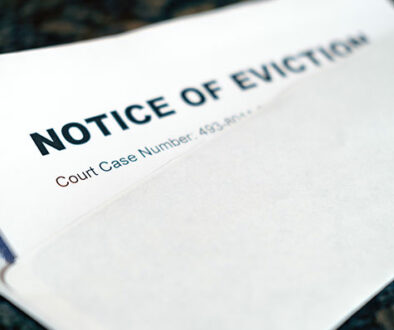Mitigating Property Damage Risks: A Strategic Guide for Landlords
Owning rental properties can be a rewarding venture, but it also comes with the potential risks of property damage caused by tenants. From accidental mishaps to neglectful behavior, landlords face the challenge of preserving the integrity of their investments. In this guide, we will explore effective strategies from a landlord’s perspective on mitigating property damage risks and maintaining the long-term value of rental assets.
- Thorough Tenant Screening:
The foundation of mitigating property damage risks begins with a meticulous tenant screening process. Conduct comprehensive background checks, verify rental history, and contact previous landlords to assess an applicant’s reliability and responsibility as a tenant.
- Educate Tenants on Property Care:
During the lease signing and move-in process, take the opportunity to educate tenants on proper property care. Provide guidelines on routine maintenance tasks, such as changing air filters, reporting leaks promptly, and ensuring proper ventilation. A well-informed tenant is more likely to take preventive measures.
- Regular Property Inspections:
Implement a schedule for regular property inspections to proactively identify potential issues. During these inspections, assess the condition of appliances, plumbing, and other areas that may be prone to wear and tear. This proactive approach allows landlords to address minor problems before they escalate.
- Clear Lease Agreement Clauses:
Craft a comprehensive lease agreement that includes clear clauses regarding tenant responsibilities for property maintenance and care. Outline expectations for routine tasks and specify the consequences of neglect or damage caused by the tenant’s actions or negligence.
- Security Deposit Protection:
Ensure that a substantial security deposit is collected before the tenant moves in. Clearly communicate to tenants that the security deposit is intended to cover any damages beyond normal wear and tear. This financial incentive encourages tenants to take extra care of the property.
- Prompt Repairs and Maintenance:
Respond promptly to repair requests and address maintenance issues swiftly. A proactive approach to property upkeep not only maintains the property’s value but also fosters a sense of responsibility among tenants, encouraging them to report problems in a timely manner.
- Insurance Coverage:
Encourage tenants to obtain renter’s insurance, which can provide coverage for their personal belongings in case of unforeseen events like fires or natural disasters. While this insurance doesn’t directly protect the property, it helps in mitigating the financial burden on tenants, potentially reducing disputes over damages.
- Implement Routine Property Upkeep:
Regularly invest in preventive maintenance measures, such as exterior painting, roof inspections, and landscaping. These routine efforts not only enhance the property’s curb appeal but also contribute to its overall durability, reducing the likelihood of major damages over time.
- Communication and Tenant Relations:
Foster open lines of communication with tenants. Establishing a positive landlord-tenant relationship encourages tenants to communicate issues promptly and creates an environment where they feel accountable for the property’s well-being.
- Legal Protections and Documentation:
Understand local landlord-tenant laws and ensure that your lease agreement complies with them. Document all communication, inspections, and repairs to establish a clear paper trail in case legal action becomes necessary.
Eviction becomes a necessary recourse when tenants consistently fail to meet their rent obligations or breach lease agreements. This often challenging and time-consuming procedure involves serving notices, filing court documents and attending hearings. Ultimately, eviction is a means to protect the landlord’s property investment and financial stability while upholding the legal rights and responsibilities of both parties involved.
Eviction can be a complex process that should be approached with care and adherence to the law. While it is a last resort, sometimes it becomes necessary to protect the interests of the landlord. By understanding the legal grounds, communicating effectively, seeking legal advice, and following the proper procedures, landlords can navigate eviction problems while maintaining legal compliance and safeguarding their property investments.
With Failure To Launch, landlords have an expedited and cost-effective solution to efficiently address eviction challenges without the usual prolonged timelines and costs associated with traditional legal channels.
You don’t have to go through expensive courts or eviction lawyers.


